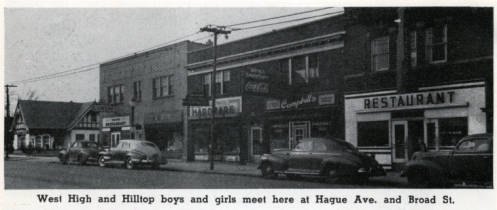Written by Karie Miller, Design by Josh Truett
First settled in 1795, the area now known as the Hilltop quietly grew with the city of Columbus. By the early 20th century, the Hilltop was well on its way to becoming the neighborhood in which to live. The Hilltop’s placement—literally on top of a hill—provided it with a geographic advantage that encouraged early settlement, and enabled its growth. A common sentiment was local residents’ notion of “moving up to the Hilltop!” Due in large part to the flood of 1913, Hilltop’s population grew from 2000 people in 1900 to 15,000 in 1920. The area had a burgeoning business and social scene. When business slowed due to the Great Depression and World War II, the community members relied on one another, thus strengthening the local culture.
As the area industrialized and the nation thrived, Hilltop diversified. As in many areas of the country, growing demand for civil rights upset the predominantly white status quo. By the mid-1950’s the original residents had moved to other areas of the city, and the new culturally diverse residents attempted to join a community that actively cherished a history and a culture that predated the new residents’ arrival. This social unrest, coupled with the impact of several highways and neighborhood displacement (residents displaced by highway construction) spelled the beginning of the end of Hilltop’s golden age.
By the 1970’s, development all but ceased entirely. Businesses and factories closed, common amenities like grocery and department stores left the area. The average income as of 2015 is $40,729[1] but areas of poverty are highly concentrated, with poverty rates increasing from 23% to 47% between 2000 and 2012.
Gaps in History
Records of development in the Hilltop have been kept inconsistently, often relying on anecdotal evidence instead of data. Data on the Hilltop is also as diverse as its population. The Hilltop is made up of five different zip codes, none of which are entirely within the boundaries of the Hilltop: 43204, 43222, 43223, 43123, and 43228.
[1] “United States Census Bureau: American Factfinder.” U.S. Department of Commerce 2017. Web. 14 May 2017.



